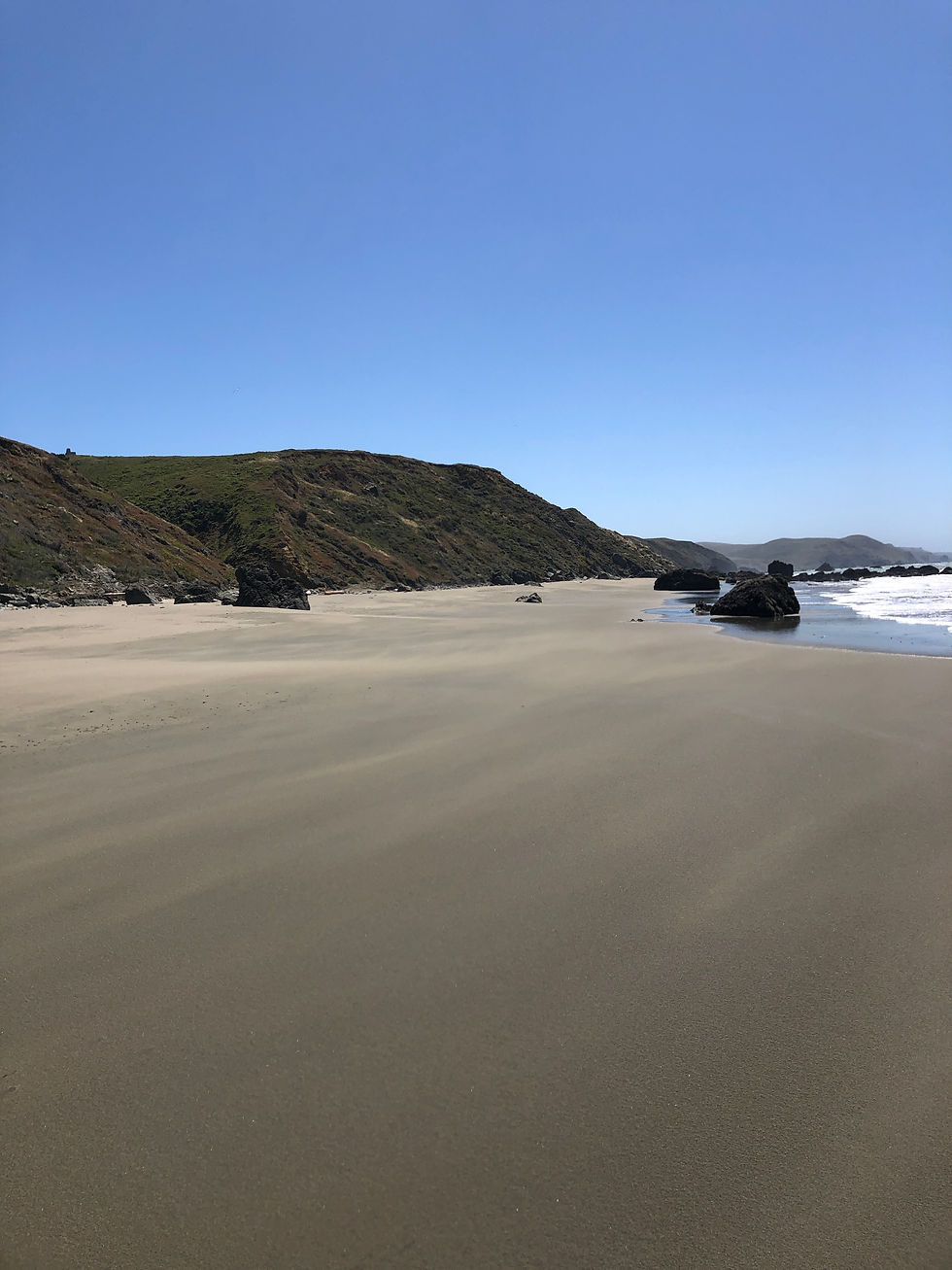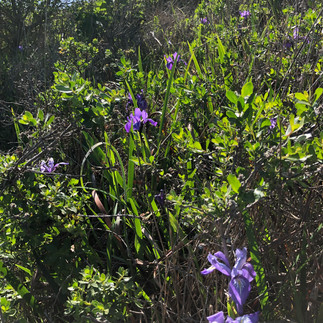Hiking Adventure - Pinnacle Gulch
- Lamar Shahbazian
- Sep 29, 2021
- 5 min read
Updated: Oct 14, 2021
I first heard about this hike on the Facebook group "Sonoma County Hiker" and I am so glad I did. My first trip there was in March 2021 with Brian and Anujin, then Rick and I went back in May, and when Katelyn arrived in June this was one of the first places we took her hiking. I cannot say enough good things about the hike - it's picturesque, not too strenuous, the trail and beach are very clean, there is good parking and even a bathroom! As you might have read in my "Analytics of hiking" blog, these are all things that I rank high in importance. The only downside is the trail is very narrow most of the way, so it's hard to socially distance. And in the wet season it is likely muddy. One thing that is good to check when you plan this hike is the tide charts, because the experience goes from "good" to "great" if you go at low tide. The reason is the sea life is amazing!

To get there, you can look for "Pinnacle Gulch Trail" on Google maps. It's located near the golf course in Bodega, but once you start hiking down the trail you quickly forget you are amongst houses.

I recommend going on a weekday if you can. The parking lot has about 12-15 spaces in it, but this little jewel of a trail is becoming well-known. Once you park, you will see a sign across the road that indicates the direction for Pinnacle Gulch. Note: Shorttail Gulch is parallel to Pinnacle to the south, and you can go from Pinnacle to Shorttail on the beach during low tide. We did that during our trip with Katelyn, and it's slightly confusing when you come out of the hiking trail back on the road. Luckily you can get cell service and follow the map if needed. If parking is not available in the lot, I have seen people park along the road in turnouts, but this likely means the beach will be more crowded.

The top of the trail has a few steps, but once you get down a bit it's mostly a dirt path, surriounded by vegetation. In the spring time there are gorgeous flowers.
The flower on the bottom right in the gallery above is Santa Barbara Daisy (aka Erigeron), and I have it in my garden. I didn't know it would grow in the wild, but I guess it proves its drought-tolerance capabilities! I also saw wild strawberries growing along the path. So interesting!
Once you get down to the beach, the first thing you will likely notice are the rocks full of mussels. I have seen mussels before but never so many in one place!

I have a confession to make - I have been wanting to write this blog for a long time but was intimidated that I wouldn't know the names of the creatures we were seeing. I finally did a little exploration and discovered a website called www.inaturalist.org. It is amazing! You can search by area or by species, look at photos, and confirm what you are looking at. You can also upload your own observations/photos and identify them, and people can comment if you have it right. So after using that, I'm pretty confident in my identification. What a cool discovery!
A slight detour while I show you some of the cool things you can do on www.inaturalist.org.

For instance, if you type in the name of a place, then look at the observations people have made there, you get a map of all the species (plant, animal, sealife) color coded. When you click on an observation, it shows you what it is and who identified it.

You can also filter the observations by all sorts of categories to make it easier to find what you're looking for. For instance, let's say I didn't know what the mussels were called, but I thought they were in the "mollusk" category, I could filter by that and it cuts down the list.

You can also click on a type of species and it will show you where else that species has been observed. For instance, if I want to know where else I can find mussels, I select that species and it shows me the observations for it. What I see here makes sense because the curving beach (Doran Beach) is all sand, so there are no rocks for the mussels to attach themselves.
OK, back to Pinnacle Gulch. Based on what I saw on www.inaturalist.org , the mussels are called "California Mussels".

Often the mussels are interspersed with whitish things, I learned on www.inaturalist.org that they are called Gooseneck Barnacles.

Even more interesting, there are also rocks full of anemones. Using the above website I identified the ones you see initially as "aggregating anemone".

The COOLEST thing we've found there are the starfish. The kids and I used to go tidepools on the central coast, and we'd be excited to see one or two. At Pinnacle Gulch, especially if you are there at low tide, you can see HUNDREDS. Here are a few samples of what you might see. According to my research, these type are called Ochre Sea Stars. They are everywhere around the rocks on the beach. Note: If I remember I wear my Teva sandals on this hike, because then I can walk through the water and get an even better view of these amazing creatures.
We also spotted the less common bat stars when we went down the beach to Shorttail Gulch.
The other species we saw a lot of was another type of anemone, especially when we were able to get closer to the big rocks. I think they are kind of gross myself, but I'm sure they serve a purpose. These are called giant green anemones.
I happened to see this sea star not fully attached, and tried to get my camera inside to see what it looked like. I was curious to know more, so I searched on "sea star feeding" and found this video. Now I know why there are so many sea stars here, because there are so many mussels for them to eat! I'm not positive, but it looks like this sea star might have been in the beginning stages of attaching itself to this mussel.



Here was another species I observed when we were there in June. I think it's some sort of jellyfish but www.inaturalist.org is failing me. So I'm testing the site to see what happens if you upload an observation and identify it, hopefully someone will correct me or verify it. Update: my friends at www.inaturalist.org came through! This was identified as a "Greater Moon Jellyfish".
Last but not least, we saw crabs on this beach. Here are a few videos for your viewing pleasure.
Based on my trusty www.inaturalist.org
I believe these are pacific rock crabs. The mussels were dripping on the sand and creating these little rings. Watch what happens when the water drip lands on the crab!
In this video, I believe they are sand crabs. It seems like the little ones are trying to help the big one flip over.
Eventually he is able to flip over and bloop, they all disappear!

When Rick and I were there in May, it was VERY windy. I was wearing capri pants and the sand blowing against my legs was actually painful. So we've learned to not just check the tide charts, but to check the wind situation before going.
In case a still photo isn't enough to give you an idea of the wind, here's a video.
I think that covers the high points of our discoveries at Pinnacle Gulch so far. I will leave you with a slideshow of photos of the scenery, and one final video showcasing the sea creatures at this amazing place.















































Comments